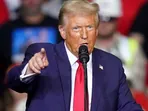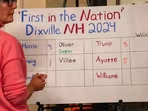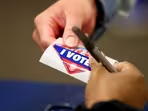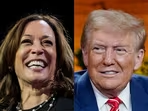“Wish they had a better message…”: Why some Indian Americans are queasy about rise of Vivek Ramaswamy and Nikki Haley
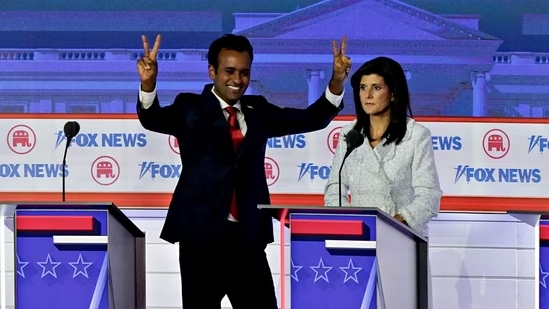
Never before have Indian Americans been represented in US politics the way they are now. Considering the latest opinion polls, two of the four leading candidates for the Republican presidential nomination are Indian Americans. According to Nate Silver's 538, Trump still continues to lead the pack ( 55.2%), with DeSantis at number 2 (13.8%) The next two candidates are Vivek Ramaswamy (6.1%) and Nikki Haley (5.6%). Both are polling better than former VP Mike Pence (4.3%) and former New Jersey Governor Chris Christie (2.8%).
In both major parties, Indian Americans have become the leading faces with a Veep sitting in the White House. The Samosa Caucus, the term used to refer the grouping of Indian Americans, was first coined by US House Representative Raja Krishnamoorthy, from the US House of Representatives from Illinois’ 8th District.
Indian Americans today consist of 1% of the US population and for the first time in American history represent 1% of the US Congress. It wasn’t always the case.
As far back as 2013, Ami Bera (D-CA) was the only Indian American in the House of Representatives. Today, there are five Indian Americans serving in Congress, a remarkable stride for a community which a decade back saw hearings in the US House of Representatives to impose strong restrictions against the entry of Indian laborers into the US.
At that time, it was estimated that most Indians were concentrated in the American West Coast and numbered fewer than 6,500. The first Indian American to break the ceiling was Dalip Singh Saud who represented California’s 29th District in Congress in 1957.
Indian Americans account for 2.1 million voters and are the third-largest Asian-origin population behind Chinese and Filipino Americans. Compared to other Asian America subgroups, Indian Americans have tended to side more with Democrats but that seems to be changing slightly now.
On the other side of the aisle, you had Bobby Jindal who served three years in Congress representing Louisiana in 2004 before becoming the Governor and who also became the first Indian American to run for President during the 2016 campaign. Meanwhile, in 2016, Kamala Harris became the first Indian American elected to the US Senate and in 2020, also became the first woman, the first person of color and the first Indian American to serve as Vice President of the United States of America.
However, the rise of Indian American politicians on the other side of the aisle has also been equally swift. Chief among them is former Ambassador to the UN Nikki Haley and entrepreneur-turned-politician Vivek Ramaswamy who are both leading the Republican charge and dominating debates. Even more interestingly, Ramaswamy has also steadfastly held on to his Hindu lineage views, making him a unicorn in a field of Republicans whose major base is evangelical Christians. Ramaswamy has argued that he’s running for “Commander-in-Chief”, not “Pastor-in-Chief” and remains the candidate who’s viewed most favorably by Trump supporters.
However, the views of Halley and Ramaswamy on several issues have disconcerted Indian American voters. A New York Times report states that Ramaswamy’s promise to dismantle the Education Department has been viewed negatively by many Indian Americans
The New York Times report noted that many of the Indian Americans interviewed had expressed frustration and dismay over the hard-line positions taken by the two candidates. It noted that many of the voters were worried that Ramaswamy's vow to dismantle the Education of Department could destroy the same institutions that had been critical to the success of the Indian Americans.
Suresh Reddy, a city councilman from Iowa who identifies as a centrist Democrat told The Times: “I’m really proud. I just wish they had a better message.”
The NYT report, which interviewed two dozen Indian American Voters across the political spectrum from early voting of Iowa, New Hampshire and South Carolina, stated that while they might form a small slice of the overall electorate, they can swing states and in purple suburbs like Florida, Pennsylvania, Michigan and Nevada. Another Democrat, Venu Rao, a retired engineer said that Haley and Ramaswamy captured the ideological diversity that existed among members of the Indian American community. Many of those interviewed by The Times expressed dismay at Halley’s and Ramaswamy’s hardline views on immigration, race, and identity.
Both Ramaswamy and Halley have expressed their love for America and have spoken glowingly of the immigrant experience. While Ramaswamy has used his platform to express gratitude to his parents for immigrating to the “greatest nation on Earth”, Haley who converted to Christianity a year after getting married, has often spoken about the pain of watching her Sikh father, who wears a turban, endure racism.


Disclaimer: The copyright of this article belongs to the original author. Reposting this article is solely for the purpose of information dissemination and does not constitute any investment advice. If there is any infringement, please contact us immediately. We will make corrections or deletions as necessary. Thank you.
Title:“Wish they had a better message…”: Why some Indian Americans are queasy about rise of Vivek Ramaswamy and Nikki Haley
Url:https://www.investsfocus.com


